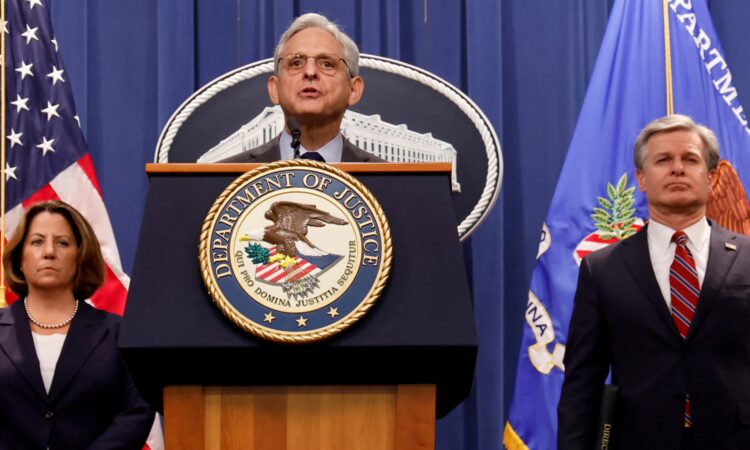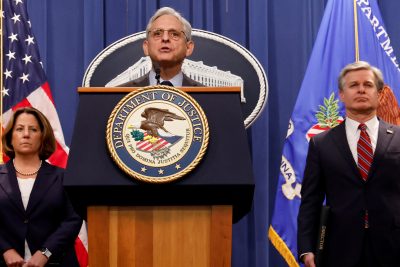
Author: Editorial Board, ANU
For some, a multipolar world is something to cheer for. Yet no balance of global geopolitical power is intrinsically better than another. Indeed, the world has overall gotten a pretty good deal out of Pax Americana, and there’s no reason to assume that whatever order replaces it would be much of an improvement.

The shift towards multipolarity is nonetheless a reality to be managed — not least by the United States, whose political elites and general public have never known anything but global economic and military pre-eminence, and who aren’t well-practised in imagining how US interests and values can be preserved in a world in which less liberal and less-developed countries, particularly China, have a far greater political, economic and military role.
The United States’ struggle with this predicament, and the hazards it creates, is old news.
But it was in 2022 that the United States truly, emphatically put itself on a course of confrontation and competition with China that extends beyond military primacy to encompass dominance over the industries that will define the 21st century economy, as Gary Hufbauer writes in this week’s lead article, part of our annual Year in Review series that surveys the key economic and political developments shaping Asia and the Pacific today.
‘The US public, inflamed by leaders in both political parties and by Chinese President Xi Jinping’s assertive actions, became convinced that China was not merely a competitor, but an adversary out to destroy US jobs and push US military forces out of Asia’, Hufbauer says. And ‘despite congenial atmospherics surrounding the meeting between presidents Xi and Biden at November’s G20 Leaders’ Summit in Bali, all signs indicate further technological decoupling in 2023’.
Meanwhile, ’as the calendar turns to 2023, the challenge of climate change looms as large as ever — for the United States, China and everyone else’. Certainly, there’s no doubting the Biden administration’s commitment to spending big — both in terms of the president and his party’s political capital, and taxpayers’ dollars — in addressing the problem. Witness the disingenuously titled Inflation Reduction Act, or IRA. As Hufbauer reminds us, ’the IRA was largely a green energy law, providing more than US$300 billion for wind, solar and other alternatives to fossil fuels’.
Full marks for enthusiasm. But sitting in Asia, any credit the region is going to give Washington for getting behind decarbonising the US economy will be more than a little tempered by the understanding that the IRA, alongside the massive CHIPS act it accompanies, represents a comeback of industrial policy cloaked in the language of national security.
The United States’ blunt rejection of the WTO ruling against the Trump administration’s steel and aluminium tariffs is also symptomatic of its retreat from the rules-based global order.
These trends are born of deeply entrenched ideational forces in Washington but electoral dynamics are also pushing the administration towards economic confrontation from China and decoupling. Biden, as Hufbauer says, had a close call with losing both chambers of the US Congress in November’s midterm elections — whose results, despite the surprise defence of Senate control by the Democrats, were better for the Republicans than much post-election analysis would have it.
As the 2024 presidential election looms, the stakes of political competition are immense. On one level it’s hard to blame the Biden administration for taking the path of political least resistance with America-first trade policies. If you’re a Democrat supporter who believes — not without reason — that the Republican Party in its post-Trump incarnation threatens the principles of American democracy, then you’re not going to take political risks to champion what many voters in the US industrial heartland see as the discredited vision of free trade and free markets — regardless of their merit.
The political realities now suggest that Asia has to ‘price in’ a United States that is not only delinquent in its leadership of the multilateral trading system, but also a United States that is disrupting trade by unravelling international production chains that run through (and from) East Asia. The complicated nature of international supply chains, as we’ve said before, means that any attempt to reshape them to conform with geopolitical rather than economic logic will produce a messy set of winners and losers, with more losers than winners, especially in Asia.
The challenge will be for Asia and the rest of the world to defend and nurture the multilateral framework that is essential to a stable multipolar world but on which America has for the moment turned its back.
The EAF Editorial Board is located in the Crawford School of Public Policy, College of Asia and the Pacific, The Australian National University.






